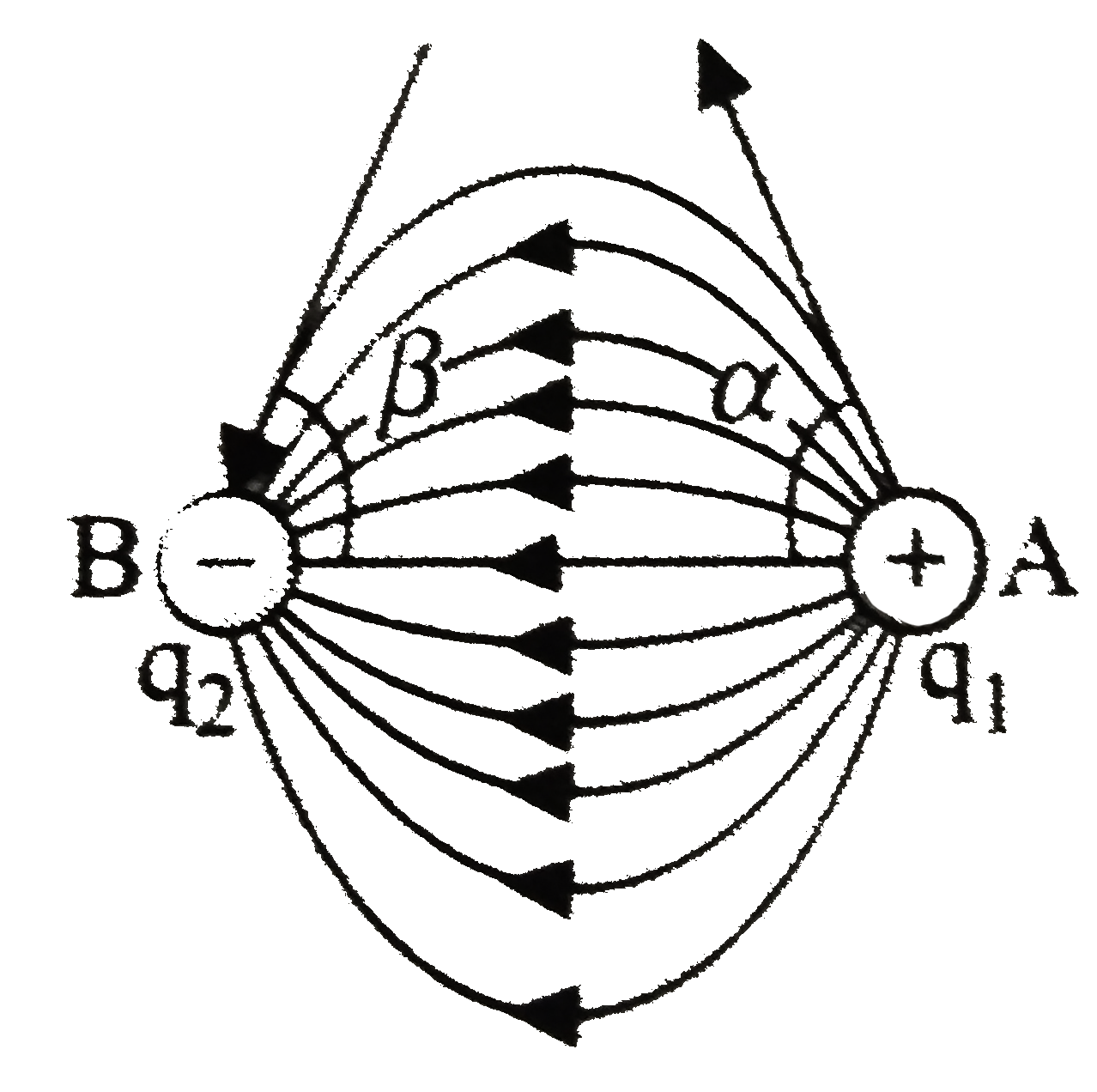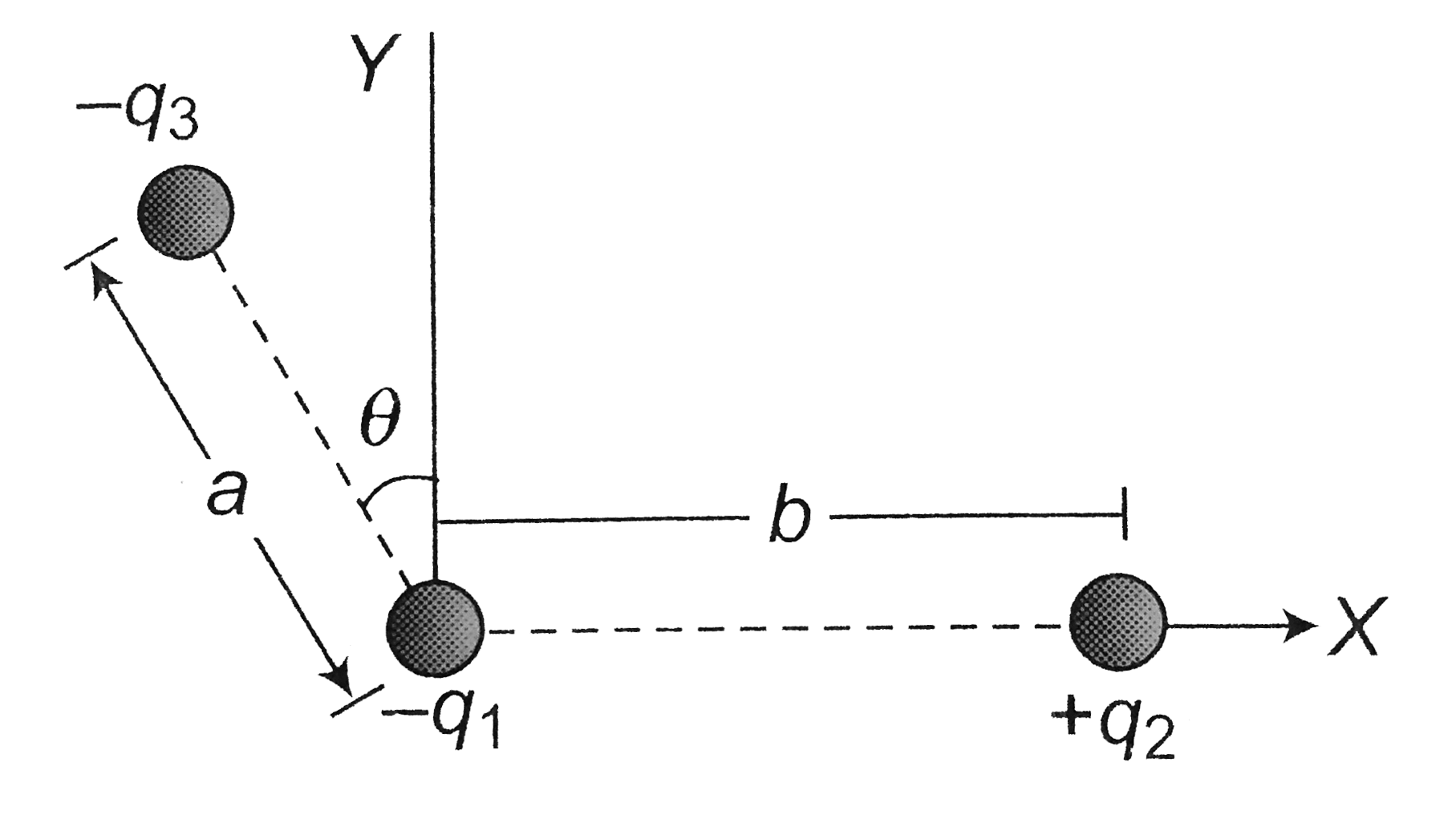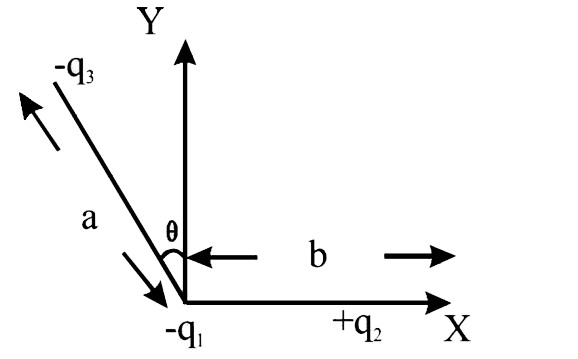Two charges and are placed at A and B respectively. A line of force emanates from at an angle with the line AB. At what angle will it terminate at ?

The correct Answer is:
Solid angle

Topper's Solved these Questions
- BOOK - ALLENCHAPTER - MISCELLANEOUSEXERCISE - Exercise-05(A)35videos
MISCELLANEOUS
- BOOK - ALLENCHAPTER - MISCELLANEOUSEXERCISE - Exercise-05(B)19videos
MISCELLANEOUS
- BOOK - ALLENCHAPTER - MISCELLANEOUSEXERCISE - Exersice-04[A]34videos
MISCELLANEOUS
- BOOK - ALLENCHAPTER - KINEMATICS (MOTION ALONG A STRAIGHT LINE AND MOTION IN A PLANE)EXERCISE - BEGINNER S BOX-78videos
KINEMATICS (MOTION ALONG A STRAIGHT LINE AND MOTION IN A PLANE)
- BOOK - ALLENCHAPTER - PHYSICAL WORLD, UNITS AND DIMENSIONS & ERRORS IN MEASUREMENT EXERCISE - EXERCISE-IV8videos
PHYSICAL WORLD, UNITS AND DIMENSIONS & ERRORS IN MEASUREMENT
Similar Questions
Two point charges +q1 and −q2 are placed at A and B respectvely. An electric line of force emerges from q1 making an angle α=60∘ with line AB and terminates as −q2 making an angle of 90∘ with line AB.
(a). Find ∣∣∣q1q2∣∣∣ ltbr> (b). Find the maximum value of angle α at which a line emitted from q1 terminates on charge q2.
 View Solution
View SolutionTwo charges q1andq2 are placed at (0,0d)and(0,0−d) respectively. Find locus of points where the potential is zero.
View Solution
Knowledge Check
- Question 1 - Select One
Three charges −q1,+q2 and −q3 are placed as shown in the figure. The x-component of the force on −q1 is proportional to
 Aq2b2−q3a2sinθBq2b2−q3a2cosθCq2b2+q3a2sinθDq2b2+q3a2cosθ
Aq2b2−q3a2sinθBq2b2−q3a2cosθCq2b2+q3a2sinθDq2b2+q3a2cosθ - Question 2 - Select One
Three charges −q1,+q2 and −q3 are placed as shown in the figure. The x-component of the force on −q1 is proportional to
 Aq2b2−q3a2sinθBq2b2−q3a2cosθCq2b2+q3a2sinθDq2b2+q3a2sinθ
Aq2b2−q3a2sinθBq2b2−q3a2cosθCq2b2+q3a2sinθDq2b2+q3a2sinθ - Question 3 - Select One
Two points charge q1 and q2(=q1/2) are placed at points A(0,1) and B(1,0) as shown in the figure.The electric field vector at point P(1,1) makes an angle q with the x-axis ,then the angle q is
 Atan−1(12)Btan−1(14)Ctan−1(1)Dtan−1(0)
Atan−1(12)Btan−1(14)Ctan−1(1)Dtan−1(0)
Two charges q1andq2 are placed at (0,0,d) and (0,0,-d) respectively. Find locus of points where the potential is zero.
View SolutionTwo charges q1andq2 are placed at (0,0,d) and (0,0,-d) respectively. Find locus of points where the potential is zero.
View SolutionTwo point charges Q and q are placed at distance r and r2 respectively alogn a straigt line from a third charge 4q. If q is in equilibrium determine Qq.
View Solution(a) An electric dipole of dipole moment →p is placed in a uniform electric field →E at an angle θ with it. Derive the expression for torque (→τ) acting on it. Find the orientation of the dipole relative to the electric field for which torque on it is (i) maximum, and (ii) half of maximum.
(b) Two point charges q1=+1μC and q2=+4μC are placed 2 m apart in air. At what distance from q1 along the line joining the two charges, will the net electric field be zero ?View SolutionThree charges −q1, +q2 and −q3 are placed as shown in the figure. The x-component of the force on −q1 is proportional to
 View Solution
View Solution

